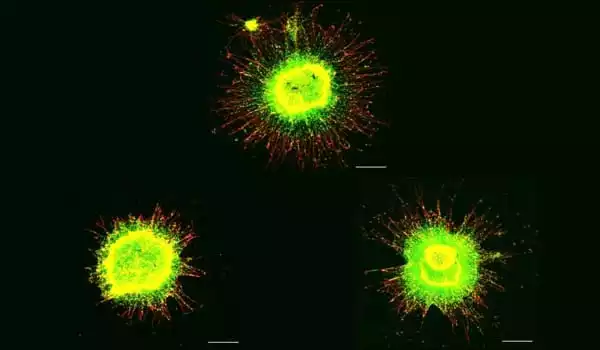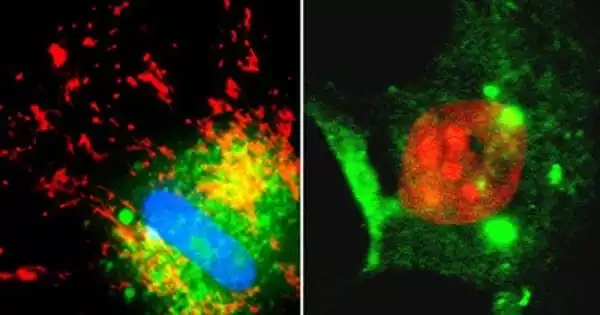In neural progenitor cells, an extra chromosome alters chromosomal conformation and DNA accessibility across the entire genome, disrupting gene transcription and cell functions in a manner similar to cellular aging.
According to a new study, the third copy of chromosome 21 in Down syndrome causes a reorganization of the entire genome’s 3D configuration in a key cell type of the developing brain. The resulting disruptions in gene transcription and cell function are so similar to those seen in cellular aging, or senescence, that the researchers leading the study discovered they could correct them in cell cultures using anti-senescence drugs.
According to Hiruy Meharena, a new assistant professor at the University of California San Diego who led the work as a Senior Alana Fellow in the Alana Down Syndrome Center at MIT, the study published in Cell Stem Cell establishes senescence as a potentially targetable mechanism for future treatment of Down syndrome.
“There is a cell-type-specific genome-wide disruption that is independent of gene dosage response,” Meharena explained. “It’s a very similar phenomenon to what’s seen in aging. This suggests that excessive senescence in the developing brain caused by the third copy of chromosome 21 may be a major contributor to the neurodevelopmental abnormalities seen in Down syndrome.”
This study demonstrates the importance of asking fundamental questions about the underlying mechanisms of neurological disorders. We didn’t start out expecting to find senescence as a translationally relevant feature of Down syndrome, but the data came from asking how the presence of an extra chromosome affects the architecture of all of a cell’s chromosomes during development.
Professor Hiruy Meharena
The discovery that neural progenitor cells (NPCs), which develop into major brain cells such as neurons, have a senescent character is remarkable and novel, according to senior author Li-Huei Tsai, but it is supported by the team’s extensive work to elucidate the underlying mechanism of the effects of abnormal chromosome number, or aneupoloidy, within the cells’ nucleus.
“This study demonstrates the importance of asking fundamental questions about the underlying mechanisms of neurological disorders,” said Tsai, Picower Professor of Neuroscience at MIT and director of the Alana Center and The Picower Institute for Learning and Memory. “We didn’t start out expecting to find senescence as a translationally relevant feature of Down syndrome, but the data came from asking how the presence of an extra chromosome affects the architecture of all of a cell’s chromosomes during development.”
Genomewide changes
Meharena and her colleagues spent years measuring differences between human cell cultures that differed only by whether or not they had a third copy of chromosome 21. NPCs were grown from stem cells derived from volunteers. The researchers looked at 3D chromosome architecture, several metrics of DNA structure and interaction, gene accessibility and transcription, and gene expression in both stem cells and NPCs. They also investigated the effects of gene expression differences on important developmental cell functions, such as how well they proliferated and migrated in 3D brain tissue cultures. Stem cells were not significantly different, but the third copy of chromosome 21 had a significant impact on NPCs.
Overall, the picture that emerged from NPCs was that the presence of a third copy causes all other chromosomes to squish inward, similar to how people in a crowded elevator must narrow their stance when one more person squeezes in. The main consequences of this “chromosomal introversion,” which was meticulously quantified in the study, are more genetic interactions within each chromosome and fewer interactions between them. Changes in DNA conformation within the cell nucleus cause changes in how genes are transcribed and thus expressed, resulting in significant differences in cell function that affect brain development.

Treated as senescence
The full significance of the genomic changes were not apparent for the first couple of years as these data emerged, according to Meharena, until he read a paper showing very similar genomic rearrangement and transcriptional alterations in senescent cells.
After confirming that the Down syndrome cells bore a similar signature of transcriptional differences, the researchers decided to see if anti-senolytic drugs could reverse the effects. They experimented with a combination of two drugs: dasatinib and quercetin. Not only did the medications improve gene accessibility and transcription, but they also improved cell migration and proliferation.
However, because the drugs have significant side effects – dasatinib is only given to cancer patients when other treatments have failed – they are not appropriate for attempting to intervene in brain development in people with Down syndrome, according to Meharena. Instead, the study’s findings could spark a search for medications with anti-senolytic properties but a lower risk profile.
Senescence is a stress response in cells. At the same time, years of research by former MIT biology professor Angelika Amon, who co-directed the Alana Center with Tsai, has shown that aneuploidy causes significant stress in cells. The new findings raise the question of whether the senescence-like character of Down syndrome NPCs is indeed the result of aneuploidy-induced stress, and if so, what that stress is.
Another implication of the findings is that excessive senescence among brain cells may have long-term consequences for people with Down syndrome. The risk of Alzheimer’s disease in the Down syndrome population is much higher at a much younger age than in the general population. This is thought to be due in part to the presence of a key Alzheimer’s risk gene, APP, on chromosome 21, but the newly discovered proclivity for senescence may also hasten Alzheimer’s development.
















